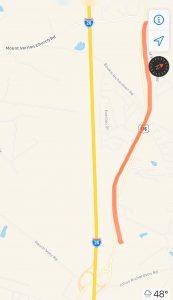
Over past several weeks, I’ve heard the complaints and actually driven and seen myself. I received an answer
to my questions of who was the contractor, has DOT had issues with contractor before….and when will it be fixed?
Here’s what I received:
The ‘resurfacing’ on Broad River Road, US 176, in Richland County was actually not resurfacing, but was a road surface preservation treatment used to extend the life of the pavement. This preservation treatment, called micro-surfacing, is used on roads that are not yet on the resurfacing list and is used on roads all over South Carolina. This treatment is only about 3/8” thick and typically bonds to the road surface very well and serves as a wearing surface to extend the usable life of the road. The contractor, Slurry Pavers Inc., began micro-surfacing on US 176 on 5/11/2018 and continued until 6/3/2018. This project as a whole reached substantial work completion on 7/19/2018. A final inspection was completed on this project on 7/25/2018. At the time of the final inspection only small unrelated problems existed on the road and the roadwork was accepted contingent on the small repairs. During heavy rains of October and November of 2018 the surface began to delaminate very similar to how it is currently. At the time we believed it to be a latent defect with the slurry seal. The contractor was contacted and scheduled repairs as soon as weather would permit. The contractor mobilized to the roadway and completed repairs from 1/8/19 to 1/10/19 and again from 3/7/19 to 3/11/19. After completion of the repairs, the roadway rode and functioned as expected with a micro-surfacing application. No issues or potholes were noted until they began to reappear suddenly in December of 2019. This type deterioration has not been observed at other locations across the state and appears to be unique to this section of US 176 and not an issue with the product. We have continuously reviewed and studied these areas to determine the root cause and possible remedies to this area. Staff from our Office of Materials and Research have evaluated the issue and have also concluded that the product was not defective but that there appears to be an issue with moisture in the underlying layers that is contributing to the unusual delamination of the thin surface treatment.
Understanding the sensitivity of our taxpayers, we want to ensure that the fix we put in place is a lasting one. Therefore, more evaluation is needed before a final reconstruction decision is made. Over the next several weeks, the pavement is going to be re-evaluated by our Pavement Management team using specialized equipment. Also, our maintenance forces will be milling off the top layer of the surface treatment to restore a smoother ride and minimize the nuisance to the traveling public. This will give our subject matter experts the opportunity to further investigate causes of this delamination and determine the best path forward.
As we move forward, I will keep you all informed as new information becomes available. Please let me know if there are any questions.
Thanks,
Robert C. Dickinson, P. E.
District 1 Engineering Administrator